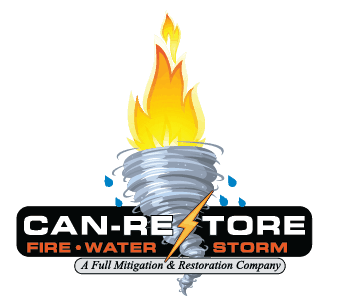 Is there a right and wrong way to manage water and fire restoration?
Is there a right and wrong way to manage water and fire restoration?
Water and fire restoration go hand-in-hand, and are both equally important. Why? Because without the proper approach to fire damage you could be looking at costly repairs, extensive damage, and a longer period of time before you can return to your house after a fire. Here’s the information you need on the importance of proper restoration.
Emergency Response is Critical
One of the most important factors in dealing with fire damage is timing. The sooner restoration specialists are on the scene to secure the building, assess the damage, and start the cleanup process the better. Quick action is key to a successful cleanup and the most promising way to be able to restore as much as possible.
Getting the Water Out
Removing the water left behind by the firefighters is the next priority when it comes to fire damage cleanup. Water can be the most harmful and damaging part of the aftermath of a fire, so water extraction needs to take place as quickly as is realistically possible.
Not only does water start to breakdown elements of a building rather quickly, but it can create the perfect environment for mold and mildew growth, not to mention bacteria. So getting the water out and the house dried out is one of the most important steps in the process.
Packing and Storage of Belongings
One step that can’t be skipped is removing belongings from the building. Whether it’s furniture, appliances, or personal belongings, getting them out of the way will allow for more effective cleaning of the space.
Additionally, moving your belongings out of the house makes it possible to do a careful evaluation of each item to determine if it’s salvageable or if it needs to be discarded. Packing these items that can be restored and storing them during house cleanup is part of the process.
Soot and Smoke Residue Cleaning
Soot and smoke residue are incredibly damaging and the sooner they get cleaned up the less damage they’re likely to do. They are both extremely corrosive and can cause discoloration of wood, paint, wallpaper, and appliances as well as causing etching on glass and fixtures.
Because soot and smoke can vary depending on the type of fire and what was burned in the process, the right approach must be taken. Using the right tools and the right products will make all the difference when working toward a complete recovery.
Smoke Odor Removal
Another absolutely vital step to cleaning up after a fire is managing the smoke odor removal. Nothing is worse than returning to a home that still smells like smoke. People have had to move out and even tear down houses that have lingering fire smoke odor.
The key to getting rid of the smell is managing the air cleaning process. Once the soot and smoke residue are fully removed, it’s time to tackle the air itself. Because smoke is airborne it can travel to every space in your home. Having the right tools to grab, trap, and discard the smoke particles that remain is the trick.
Using air purification systems and ozone generators, it’s possible to not only pull the smoke particles from the air and filter them, but also to change their makeup and neutralize the smell. There are no shortcuts when it comes to getting rid of smoke odor.
As you can see, there are a number of really important steps when it comes to fire damage cleanup, each vital in their own way to the success of the restoration process.
If you’ve been the victim of a fire, you can count on the experts to help guide you through the process. Contact Can-Restore for help with fire and water restoration by calling (770) 212-9775.

